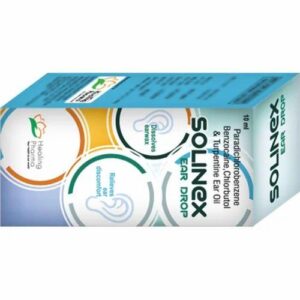CHLORBUTANOL + BENZOCAINE + TURPENTINE OIL
Chlorbutanol: Chlorbutanol, also known as trichloro-2-methyl-2-propanol or 1,1,1-trichloro-2-methylpropan-2-ol, is a medication used primarily as a sedative and hypnotic. It belongs to the class of drugs known as chloral derivatives and has both sedative and local anesthetic properties.
Chlorbutanol acts by depressing the central nervous system, leading to sedation and sleep induction. It enhances the activity of the inhibitory neurotransmitter gamma-aminobutyric acid (GABA) in the brain, resulting in a calming effect.
The suggested dose of chlorbutanol varies depending on the specific condition being treated and the patient’s age and overall health. It is available in different dosage forms, including oral tablets and solutions, injectable solutions, and topical creams. The exact dosage should be determined by a healthcare professional.
Common side effects of chlorbutanol include drowsiness, dizziness, confusion, headache, nausea, and blurred vision. These side effects are generally mild and temporary. However, prolonged use or high doses can lead to more serious side effects such as respiratory depression, cardiovascular effects, and even dependence or addiction.
Chlorbutanol should be used with caution in individuals with impaired liver function, respiratory disorders, or a history of drug or alcohol abuse. It is contraindicated in patients with a known hypersensitivity to chlorbutanol or any of its components.
As with any medication, it is important to follow the prescribed dosage and duration of treatment to minimize the risk of side effects and complications. It is recommended to discuss the potential benefits and risks of using chlorbutanol with a qualified healthcare professional before initiating therapy.
Benzocaine: Benzocaine is a local anesthetic commonly used to relieve pain and discomfort caused by minor skin irritations, sore throat, sunburn, teething, and insect bites. It is part of the ester local anesthetics group and is available in various formulations such as gels, creams, sprays, lozenges, and ointments.
The mechanism of action of Benzocaine involves temporarily blocking the nerve signals in the affected area, therefore producing a numbing effect. It does this by inhibiting the sodium ion channels required for the generation and conduction of nerve impulses. This action helps to alleviate pain and provide temporary relief.
The dose of Benzocaine depends on the specific formulation and the intended use. It is usually applied topically to the affected area or used as directed by a healthcare professional. Different products will have specific instructions regarding usage, so it is important to read and follow them carefully.
Although Benzocaine is generally considered safe for most individuals when used as directed, it can have potential side effects. Common side effects may include skin irritation, burning, redness, or a rash at the application site. In rare cases, individuals may experience allergic reactions such as swelling, itching, difficulty breathing, or a rash spreading beyond the application site. If any severe side effects or allergic reactions occur, medical attention should be sought immediately.
It is worth noting that Benzocaine should not be used on large areas of the body or for prolonged periods without medical supervision, as it may lead to methemoglobinemia. This is a condition that reduces the ability of red blood cells to carry oxygen and can be potentially dangerous.
As with any medication, it is important to consult a healthcare professional or pharmacist before using Benzocaine, especially if you have any underlying medical conditions, are taking other medications, or are pregnant or breastfeeding. They can provide personalized advice based on your specific circumstances.
Turpentine Oil: Turpentine oil, also known as turps, is a volatile essential oil derived from the resin of various pine trees. It has been used for centuries in traditional medicine for its antiseptic, anti-inflammatory, and expectorant properties.
One of the primary uses of turpentine oil is as a solvent in various industrial and household products, including paints, varnishes, and cleaning agents. Medically, it has been used topically as a counterirritant for the relief of muscle and joint pain, and as an inhalant for respiratory ailments.
The exact mechanism of action of turpentine oil is not fully understood. However, it is believed to work by stimulating the nerve endings, thereby providing a cooling effect and relieving pain. It may also have antimicrobial properties, which could contribute to its use as an antiseptic.
The appropriate dose of turpentine oil can vary depending on the specific condition being treated. When used topically, it is typically applied in small amounts to the affected area and then covered with a clean cloth or bandage. As an inhalant, a few drops of the oil can be added to hot water and the steam can be inhaled. It is important to follow the instructions provided by a healthcare professional or as indicated on the product packaging.
While turpentine oil is generally considered safe to use in small amounts, it can have some side effects. Topical use can cause skin irritation, redness, and allergic reactions in some individuals. Ingestion or inhalation of large amounts of turpentine oil may lead to more severe side effects such as nausea, vomiting, diarrhea, headache, dizziness, and even kidney damage. It is essential to always use turpentine oil as directed and to avoid excessive exposure or ingestion.
It is important to note that the use of turpentine oil for medicinal purposes is controversial and not supported by scientific evidence. It is recommended to consult with a healthcare professional before using turpentine oil for any medical condition to ensure its safety and appropriateness.

